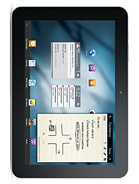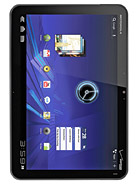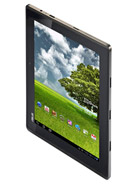LG Optimus Pad review: Glasses on
Glasses on
Android Market on a big screen
The additional applications are the heart of every modern mobile platform. The more and the higher-quality they are the better the market prospects of their OS. For the Optimus Pad this is a two-sided tale.
You get a customized Android market interface that lets you browse and search the hundreds of thousands of apps quicker than ever before. The productivity is probably the best there is on the market and gaming is second only to the App store.


The Android market has been nicely optimized for tablets
On the other hand though, only a handful of those apps are actually optimized for the Optimus Pad. WVGA ones aren’t too pixelated but they are not perfectly sharp either. As to those meant for lower resolution – you need not bother.
The performance is really a mixed bag with quite a lot of the apps we installed suffering puzzling lags. We are speaking of apps that run fine on single-core WVGA handsets and that we would’ve assumed to be a walk in the park for the Optimus Pad. Obviously, there’s some more optimization needed before the Optimus Pad can really enjoy the same kind of freedom as its smartphone siblings.It may not even be the Pad that’s to blame, we had the same issues with the Motorola Xoom too.



Checking out app details • the My apps screen
Final words
It’s good to be a tablet these days. But it’s hard to rise above the rest. Honeycomb, Tegra dual-core and pretty much standard screen resolution, makers need to go to great lengths to make their slates stand out.
The LG Optimus Pad seems to have more reasons than usual to call itself special. A pretty capable 5MP camera (actually two of them) and 1080p videos bolster its imaging credentials. The connectivity package is above the average too, with a standard miniHDMI port and USB On-The-Go. It’s a well-accessorized gadget too.
And then there’s 3D. If nothing else, it feeds the hype machine and gives the Pad an extra leg to stand on. In fairness, the 3D stills turned out to be disabled, and the mandatory 3D glasses were not supplied with our unit. Not to mention, photo and video don’t usually top the bill for tablet users.
Anyway, 3D may be a joke for some (can’t blame them at this point) while others may find use for it in the right environment. In a wider context with 3D smartphones and TVs, the Optimus Pad may actually prove relevant. Just like the HDMI port is more than a mere line in the spec sheet if you think a 3D-enabled TV.
The 3D stuff aside, the Optimus Pad is pretty much like the lot: unskinned Android Honeycomb, 32GB of internal storage, Tegra 2 chipset and rich connectivity options. We’re less than impressed with the screen, but it’s got nothing to do with the resolution or size. In fact, at 8.9” the Optimus Pad hits the sweet spot between performance and portability.
It’s the screen size that leaves no doubt about the main rival. The Galaxy Tab 8.9 is still to be released but perhaps it doesn’t mind coming late as long as it comes prepared. If Samsung’s tablet gets released with Honeycomb 3.1, the tables may turn. In terms of features, the choice between the two Korean tablets is one between telephony and a memory card slot (Samsung) and 3D imaging (LG). We however think that the real decider will be size and weight. The super slim and lightweight Galaxy Tab 8.9 is in no mood to fool around when it comes to the key feature of tablets, portability.
The Motorola XOOM was the first tablet to the market to run Honeycomb and one that’s certain to get a boost from Honeycomb 3.1. The XOOM is a well featured tablet, matching the Optimus Pad spec for spec down to the HDMI port. It’s got a microSD slot too but obviously none of the Optimus Pad’s 3D trickery. The XOOM was released with a hefty price tag but it’s now significantly cheaper than the Optimus Pad.
Speaking of it, budget-conscious users are not without options. The EeePad Transformer by Asus is one. It brings a 10.1” LED-backlit IPS LCD display with scratch protection, a memory card slot, Waveshare UI and an optional keyboard dock. Not to mention the lower price.
The 3G-capable Acer Iconia Tab A501 also features a microSD card slot. The Iconia Tab A501 was released in April and its 32GB version is cheaper than the Optimus Pad.
So, there’re cheaper and better-looking alternatives, bigger screens and better screens, custom interfaces. These are more or less subtle differences – performance and productivity are quite similar. A unique ability helps the Optimus Pad stand out but it pushes the price up. The 3D technology creates a habitat for the Optimus Pad to exist. But it’s still a species that needs to evolve to earn its own place in this ecosystem.
Reader comments
- tony
- 18 Apr 2016
- 3Yh
Do still have the lg optimus pad
- Tom
- 04 Nov 2011
- mNI
Thank you for this reviev. It is THE best one which I found in net. Thank you.
- AnonD-17431
- 11 Aug 2011
- tA$
It's very expensive in Indonesia...better to buy ipad



